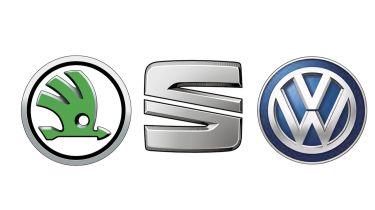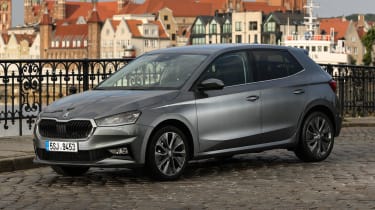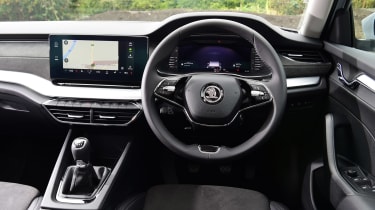SEAT, Skoda and Volkswagen: what’s the difference?
All three brands are owned by the same company, but each has a distinct identity. We explain what to expect from SEAT, Skoda and Volkswagen
Skoda
Slogan: Simply Clever
Despite being owned by Volkswagen today, Skoda is actually the oldest car maker on this list. Originally an arms manufacturer, Emil Škoda acquired a car and motorcycle manufacturing company known as Laurin & Klement (a name kept alive by Skoda’s most luxurious trim level) in 1925, and started making cars on a production line five years later.
Based in Mladá Boleslav in the north of what was then Czechoslovakia, Skoda enjoyed an unenviable reputation in the UK during the 1970s and ’80s, with its cars frequently the butt of jokes. The fall of the Soviet system heralded new business opportunities, though, and Skoda joined the Volkswagen Group in 1991. This brought about vast improvements in design and build quality and Skoda’s sales (as well as its reputation) have grown steadily ever since.
Model range:
The Skoda range starts off with the Fabia hatchback supermini, before moving up to the Scala, a small family hatch. The Octavia family hatchback and Estate are next in the range, and both are available in performance-oriented vRS guise, with a choice of petrol or diesel engines.
The Skoda Karoq is a practical and spacious SUV, and there are Kamiq (small) and Kodiaq (large) SUVs in the range, too. At the top of the range sit the Skoda Superb hatchback and Estate. Finally, there’s the new Enyaq iV electric car.
Trim levels:
The Skoda range has many trim levels, but the main ones are SE, SE Drive, SE Technology, SE L, SportLine and Laurin & Klement. The latter is named after the company’s founders and offers a luxurious specification in pretty much all cases. Skodas are well equipped in general, even on low-spec cars.
Skoda buyers are drawn to the brand for a variety of reasons, but three of the main ones are:
Value for money: although the gap between Skoda’s prices and those of other car makers is slightly narrower than it once was, the company still has a reputation for offering value for money. The Octavia hatch costs from around £22,000, for example, but an equivalent VW Golf is around £24,000.
Understated looks: for buyers after a well-built car that does what’s asked of it with minimal fuss, Skoda’s range holds appeal. You’re unlikely to be hassled by the paparazzi in a Skoda, but many are drawn to the demure styling and subtle image found throughout most of the range.
Spacious interiors and neat design touches: if you’re after the maximum amount of space for your pound, Skoda takes some beating. The Skoda Octavia hatchback and estate have two of the biggest boots in their class, while the Superb offers near-limousine-like rear legroom. Other Skoda highlights include neat design touches (to go with its slogan) such as an ice scraper that lives under the fuel cap cover on some models and the Superb’s umbrellas, which can be found hidden in its front doors.
Anything else to know?
Skoda did significantly better than either SEAT or VW in our Driver Power customer satisfaction survey, coming third out of 32 car makers. Skoda owners praise their cars in almost every respect, with practicality and running costs being most feted. Some owners find Skoda’s seats a little uncomfortable or hard to adjust to their requirements, while others feel Skodas aren’t quite as sharp to drive as they might be. Skoda’s three-year warranty is identical to SEAT’s, coming with no mileage limit for the first two years and a 60,000-mile limit in year three. As with SEAT, you can buy a four or five-year extended warranty from Skoda, although the mileage limits are slightly more generous, at 80,000 and 100,000 miles respectively. Prices range from £150 to £630 depending on the length of the policy and the car being covered.
Cheapest route into Skoda ownership: The Skoda Fabia is the brand’s cheapest model, in hatchback rather than Estate form.
Most exclusive model: the Skoda Superb is the brand’s flagship car, but it still represents good value for money. Go for the most powerful diesel engine, four-wheel drive, an automatic gearbox and top-spec L&K trim and the price rises significantly.
The one you’ll probably buy: the Skoda Octavia is the brand’s best-selling model by some margin, and with good reason: for just under £22,000, you get a roomy, comfortable well-built family hatchback that’s good to drive and cheap to run. We recommend spending a bit more on the estate model, though, because this makes the Octavia almost unbeatable in the practicality stakes.
Click here to go back a page and find out more about SEAT, or click here to go through to our final page, where we give you the lowdown on Volkswagen.
Most Popular
Tips & advice

Car dashboard warning lights: what does each symbol mean?

Electric car charging stations: public networks, charger types, apps and maps









